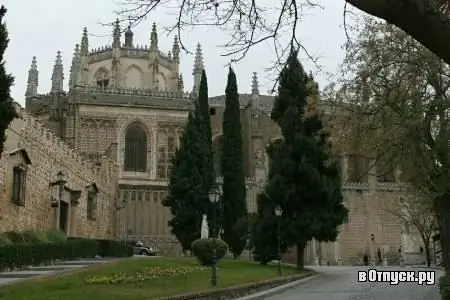
Description of the attraction
The Franciscan monastery of San Juan de los Reyes located in Toledo is one of the city's main attractions and one of its most magnificent and beautiful buildings. This monastery was founded by King Ferdinando of Aragon and Queen Isabella of Castile in honor of the birth of their child, as well as to commemorate the victory over the Portuguese troops at the Battle of Toro.
The construction of the monastery was started by the architect Juan Guas in 1477 and lasted for several decades. The main part of the building was completed in 1506. The main entrance to the monastery building, designed by the famous architect Alonso Covarrubius, was built in 1553. According to the initial project, it was assumed that the monastery would become a royal burial vault. But later it happened that Isabella and Ferdinand were buried in Granada, which they liberated.
The Monastery of San Juan de los Reyes is an example of Gothic architecture with elements typical of the Mudejar style. The church has the shape of a Latin cross in plan. The interior of the building amazes with the splendor of decoration and decor. The walls are decorated with images of eagles and the coats of arms of the royal dynasty, located in the upper gallery, the vaulted ceilings of which are decorated with magnificent designs in the Arabian style. A true work of art is the main altar, created in the 16th century by the sculptor Felipe Bigarni and decorated with depictions of scenes of the Passion of Christ and the Resurrection of Christ by the artist Francisco de Comontes. Particularly noteworthy is the magnificent indoor arcade, made in 1504 and recognized as a true architectural masterpiece of the late Gothic period.






